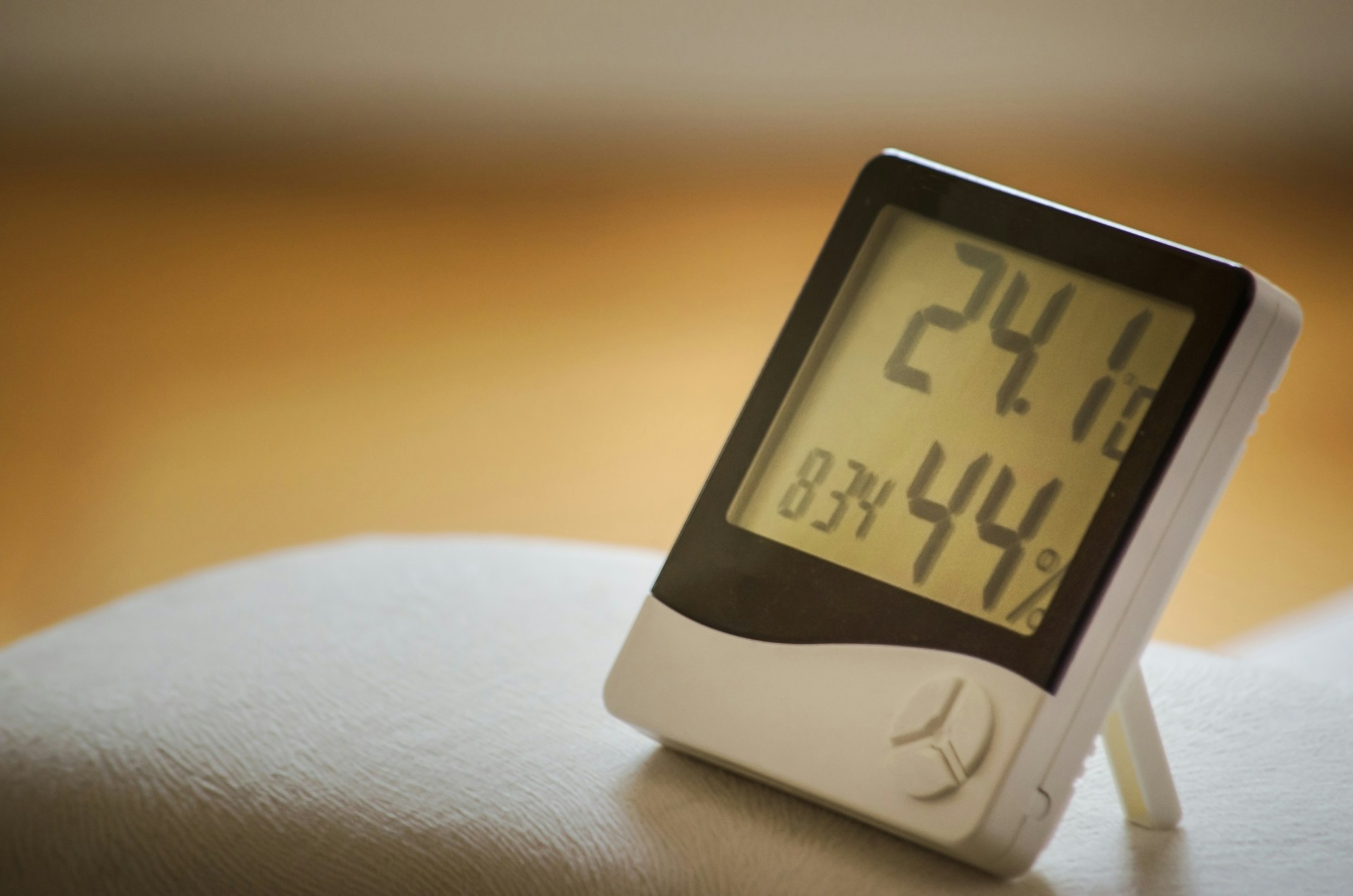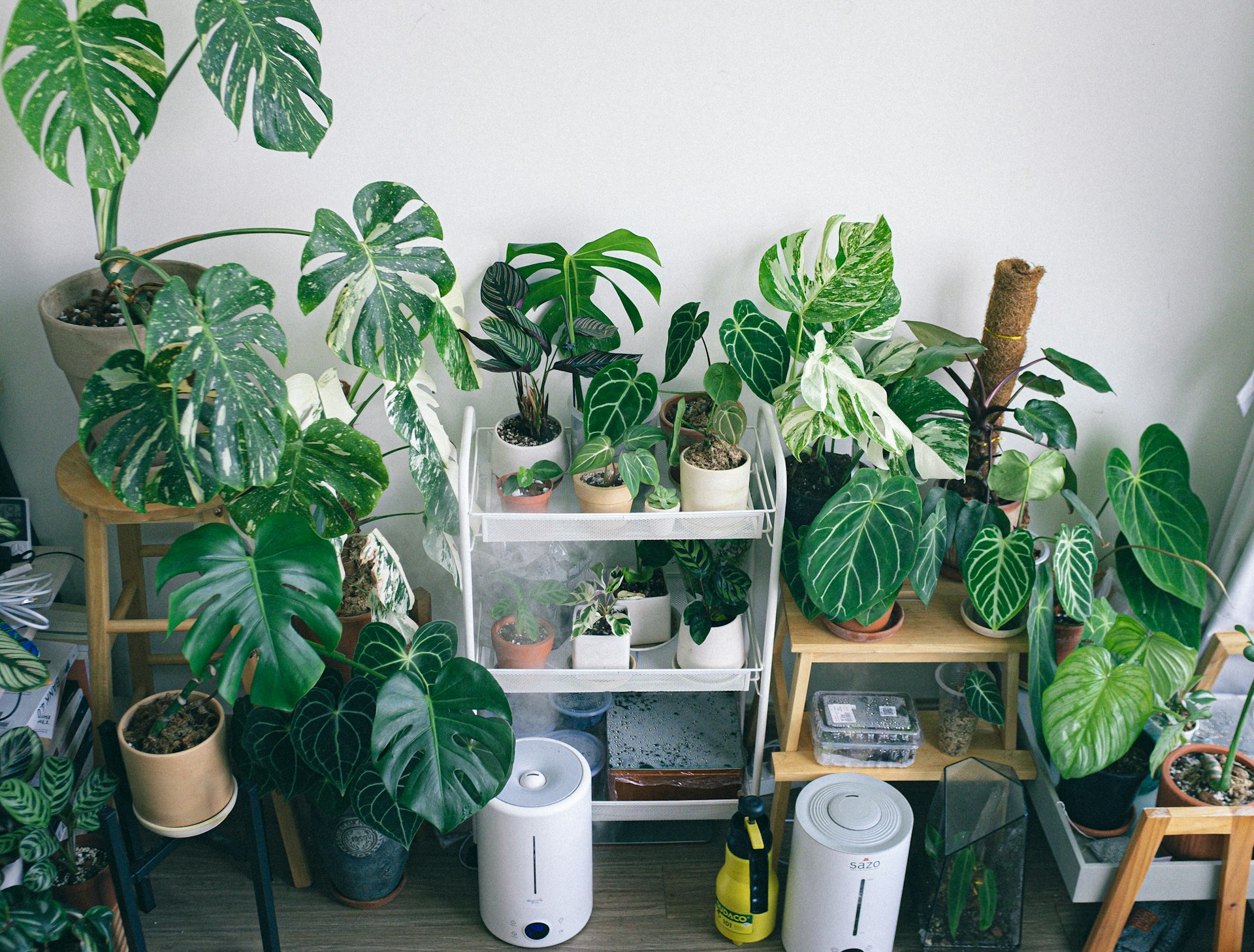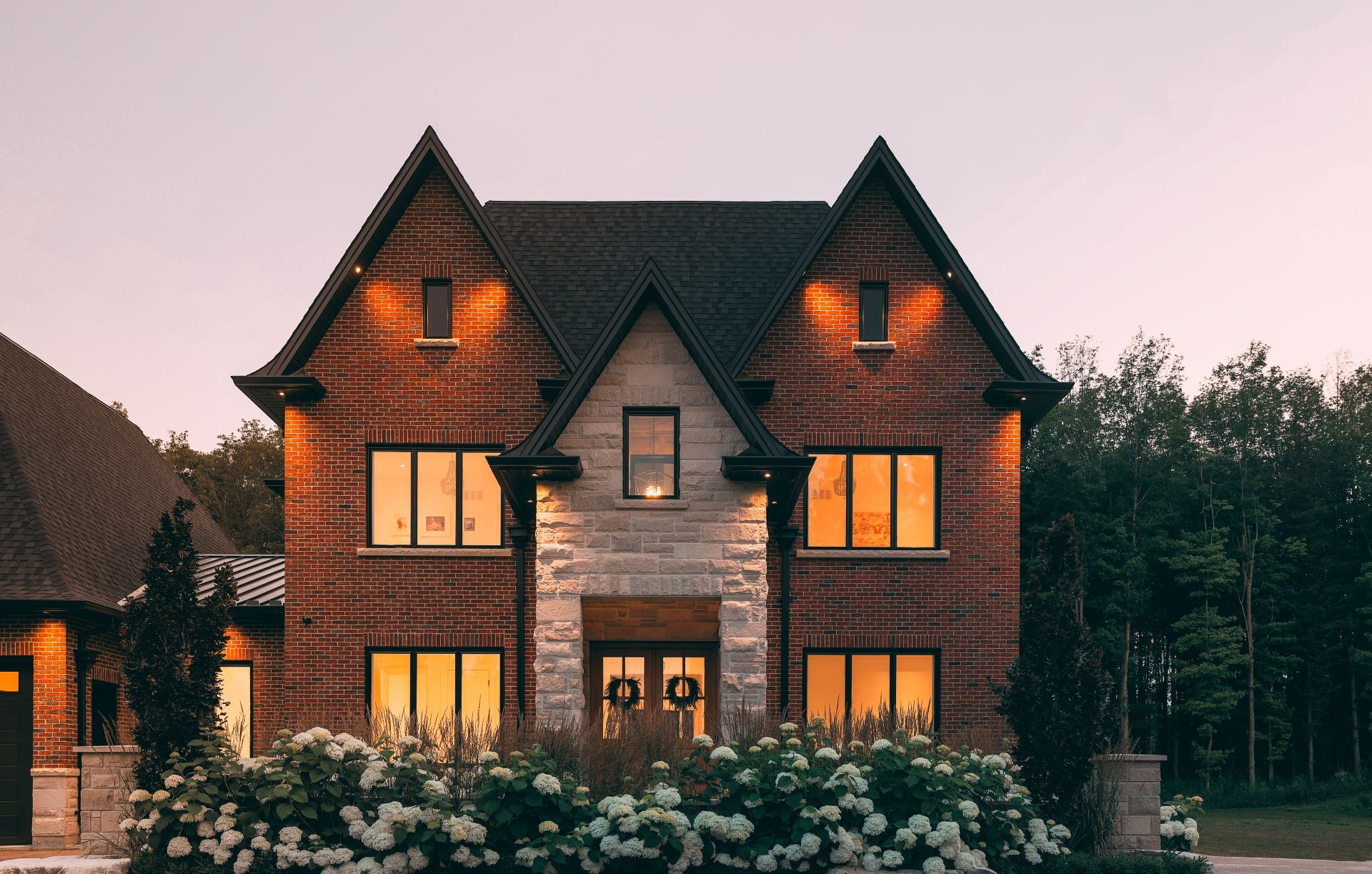
Energy Efficient Windows
How to Increase Humidity in House This Winter
Have you ever rubbed your socks on the carpet only to get zapped by static electricity? Or woken up with cracked lips or dry skin? This is because Canadian winters bring cold air that holds very little water vapor, and when this air is heated by furnaces, it becomes even drier.
Canadian homeowners should keep indoor humidity levels at approximately 30%-40% in winter and up to 50%-60% in summer. When humidity falls much below those values, the air inside becomes uncomfortable and can even make you sick.
Fortunately, this guide explains exactly how to increase humidity in house during the winter months using affordable humidifiers, natural methods, and everyday activities.
Key Takeaways
- Maintain indoor humidity: aim for 40% relative humidity during the cold season to protect your health, wood furniture, and electronics.
- Choose the right humidifier: evaporative, ultrasonic, and steam models add moisture differently. Each has pros and cons and should be chosen carefully.
- Use natural methods: house plants increase humidity through a process called evapotranspiration; boiling water and air‑drying clothes can also add moisture.
- Make daily habits count: keep the bathroom door open after a hot shower, simmer stews on the stove, and open the dishwasher after the wash cycle to release steam.
- Keep it safe: avoid over‑humidifying (above 60%) and beware of mold growth and mineral deposits caused by excess moisture. Use distilled water in ultrasonic units and place vaporizers away from children.
Why and When You Need to Increase Indoor Humidity During Winter

Cold air cannot hold much moisture, so when outside temperatures drop below freezing, the air inside your house quickly loses water vapour. Heating that cold air reduces its relative humidity even further; a home heated to comfortable temperatures can easily drop below 20% humidity, creating very dry conditions.
Humidity levels between 30% and 40% keep your home warm without condensation. Health Canada recommends 30-35% humidity in winter and below 50% in summer and warns that low humidity can lead to respiratory irritation and increased infection risk.
Health Benefits of Proper Winter Humidity
While it doesn’t sound very important, humidity levels can affect your health. For instance, when humidity is kept within the proper range, the mucous membranes in your nose and throat will stay moist, reducing cold and flu risk. Sufficiently humid air also prevents dry skin, itchy eyes, and nosebleeds, and helps you breathe comfortably through the night.
Optimal relative humidity also lowers virus transmission by stabilizing droplets. Balanced humidity also protects wood furniture and flooring from cracking and reduces static shocks.
Signs Your Home Needs More Humidity
You may need to add humidity when:
- You get zapped by static electricity or notice frizzy hair.
- Your skin feels dry, and your lips crack.
- You wake with a scratchy throat or experience frequent nosebleeds.
- Houseplants develop brown leaf tips.
- Wood floors or furniture crack, and musical instruments go out of tune.
- Your hygrometer reads below 30 percent relative humidity.
Choosing the Right Humidifier

Naturally, your first line of defense against low humidity is the humidifier. There are different types of humidifiers that produce water vapour in various ways and suit different spaces. Before buying one, consider the size of your house, noise tolerance, budget, and safety for small children or pets.
Evaporative Humidifiers
An evaporative humidifier uses a fan to blow air through a moist wick filter, speeding up natural evaporation. These units are cost‑effective and self‑regulating (they naturally slow output as humidity rises) and can serve an entire home when integrated into HVAC systems.
However, they can be noisy and require regular maintenance (the wick filter needs to be replaced regularly, as it can get moldy). Nonetheless, consumer reports found that wick‑based humidifiers emit fewer bacteria than warm‑mist models.
Ultrasonic Humidifiers
Ultrasonic humidifiers use high‑frequency vibrations to turn water into a fine mist. They are very quiet and energy‑efficient, being ideal for bedrooms and nurseries. They also minimize the risk of burns.
But because they lack filters, any minerals in tap water can turn into white dust on surfaces. The EPA recommends using distilled water to reduce mineral aerosols. But distilled water can be costly. Plus, the tanks still require thorough cleaning.
Vaporizer Humidifiers
Steam humidifiers, or vaporizers, boil water and release small amounts of vapour into the air. They quickly add moisture but pose burn risks. Small children or pets can get injured if they get too close to the hot mist, for example. Furthermore, despite the fact that they boil water, consumer testing has found that most warm‑mist units still emit bacteria.
Vaporizer units are affordable and generally better small rooms. They’re especially useful if you’re sick and need to humidify your room quickly.
Just make sure to place them safely away from people and heat sources, empty the tank daily, and disinfect weekly. They are best for temporary use and should not be used around curious kids or pets.
Effective Humidifier Use
- Proper placement: position a humidifier on a flat, water‑resistant surface, a few feet from walls or furniture. Avoid placing it directly on wood floors or carpets to prevent moisture damage. Keep it elevated and away from heat sources like heaters or radiators.
- Water quality: always fill with distilled water to minimize mineral deposits and white dust. Hard tap water can produce scale and shorten the device’s life.
- Regular maintenance: empty and dry the reservoir daily to prevent bacteria. Clean the base weekly using vinegar and a mild bleach solution, as harsh cleaners can aerosolize chemicals. Replace wicks or filters as recommended. Avoid over‑humidifying; extra humidity (above 60%) encourages mold growth.
Natural Ways to Add Moisture to Your Home

Do you prefer cost‑effective and eco‑friendly strategies? No worries! We've also prepared a list of different methods that can help you add sufficient humidity to your house without buying a humidifier!
Houseplants for Natural Humidification
Indoor plants release moisture through a process called transpiration. Water travels from the soil through roots and stems and evaporates through tiny pores on the leaves, increasing humidity in your home. Research highlights certain plants with high transpiration rates:
- Spider plants: they are easy to grow and remove toxins. Research shows that they boost humidity.
- Jade plants: their evapotranspiration happens mostly at night, making them ideal for winter’s darker days.
- Areca palms: these palms provide lush foliage and release a lot of moisture; they need bright light and moist soil.
- English ivy: this vine has one of the highest transpiration rates and can increase relative humidity and remove carbon dioxide.
- Peace lilies, Boston ferns, rubber plants, and Lady palms also help humidify and purify the air.
Boiling Water
The simplest way to increase humidity is to let boiling water release steam into the dry air. Simmer a pot of water on the stove while you cook, or fill a kettle and let it whistle occasionally.
You can float lemon slices or cinnamon sticks in the water for an added benefit of natural fragrance! Just make sure to always supervise boiling pots and turn off the stove before leaving the room.
Strategic Water Bowl Placement
stoves or sunny windows. As the water evaporates, it adds much-needed moisture to the air. You can add river stones or marbles to increase surface area and prevent spills. Moreover, make sure to refill the bowls daily and clean them regularly to avoid stagnant water.
A fish tank with an open top can provide steady humidity, too; ensure it’s well‑maintained so algae and odours don’t develop.
Air‑Drying Clothes Indoors
Instead of using the dryer, hang damp clothes on a drying rack near a window or in a room you want to humidify. As the clothes air dry, the water evaporates and raises humidity levels.
Make sure that the room is properly ventilated and keep humidity levels in check to avoid extra moisture and prevent mold.
Bathroom Steam
Take advantage of showers! A hot shower produces lots of steam, so leave the bathroom door open during and after taking a shower or a bath. This way, the warm, moist air will move into other rooms.
Strategic Cooking
Many kitchen activities naturally add moisture. Here’s what you can do:
- Simmer soups and stews on the stovetop instead of using the oven.
- Keep a pot of water on low heat to create a gentle steam.
- After boiling pasta or potatoes, let the pot sit uncovered so the water vapour escapes.
- When the dishwasher finishes its wash cycle, open the door to release steam.
Additional Tips for Maintaining Optimal Winter Humidity
Have you implemented the strategies mentioned above, but humidity levels are still low? Here’s what to keep in mind:
- Home insulation: drafty windows and doors, as well as poorly insulated attics and basements, can let dry outdoor air in, which lowers the humidity and temperature in your house.
- Temperature management: humidity levels are sensitive to temperature fluctuations, so it’s recommended to maintain a stable indoor temperature; as temperatures increase, relative humidity decreases; as temperatures decrease, relative humidity increases. Therefore, you can try lowering the thermostat a bit to see if humidity levels change.
- Heating system considerations: furnaces and heaters can release hot air and remove moisture, lowering humidity levels.
Upgrade Windows, Glass Doors, and Entry Doors with Energy-Efficient Units

Replacing old windows, patio doors, or entry doors with energy-efficient models is one of the most impactful home improvements you can make, especially in Canadian winters. Properly chosen and installed high-performance windows and doors can reduce heat loss, reduce drafts, maintain better humidity, and improve personal comfort.
If you think this could solve your humidity issue, you can book a free consultation with Magic! Here’s why our products are among the best in the GTA:
- ENERGY STAR & Most Efficient Ratings: Magic windows and doors meet or exceed ENERGY STAR requirements in Canada. Many units also qualify as ENERGY STAR Most Efficient.
- In-house manufacture of glass units (IGUs): rather than buying IGUs from a third party, we produce our glass units in-house. This enables greater quality control over features like Low-E coatings, gas fills (argon or krypton), and warm-edge spacers.
- Increased gas volume in the IGU cavity: Magic windows and glass doors allow for around 25-50% more gas between panes (compared to more standard designs), improving insulation.
- Hybrid Fusion Frames: our frames combine materials (aluminum, vinyl, steel) to ensure strength, durability, and energy performance. The welded corners and slim profiles allow more glass area (more natural light) while maintaining insulation.
- Retractable solar shades, thermal blinds, and integrated screen systems: these features double up insulating value and allow flexibility. For instance, the thermal blind can act like a third pane when in use, lowering heat loss.
- Proprietary entry door technologies: 40% more insulation, 30% more steel, integrated anodized aluminum rain deflector, proprietary multi-pocket compression seal rebated directly into the slab, proprietary U-channel design
Final Thoughts
Canadian winters can leave your house quite dry, which is why it’s of utmost importance to monitor humidity levels and maintain them between 30% and 40%.
You can do so with a humidifier, house plants, and simple habits like air‑drying laundry and leaving the bathroom door open after a shower. Whether you simmer soups or place containers of water around the house, each method adds a bit of moisture to combat dry air!
Frequently Asked Questions
How to increase humidity in the house during winter?
To increase humidity in the house during winter, use a humidifier set to 30-40%, keep houseplants, simmer water, place small bowls of water near heaters, and air-dry laundry.
How to humidify a room without a humidifier?
To humidify a room without a humidifier, group high‑transpiration plants like spider plants, jade plants, and areca palms, place bowls of water by heaters, simmer pots of water, air‑dry clothes, and leave the bathroom door open after a shower.
Why is my humidity so low in my house?
Winter air holds little moisture, and heating lowers relative humidity. Forced‑air systems and leaky windows dry out the house, so without humidifiers or evaporation sources, the humidity often drops below 30 percent.
Will a wet towel humidify a room?
Yes, a damp towel will evaporate some water into the air, slightly raising humidity. However, the effect is limited; combining wet textiles with bowls of water, simmering pots, and plants gives better results.
What is the ideal indoor humidity level during winter?
The ideal indoor humidity level during winter is 30%-40%. This range not only wards off dry skin but also helps in preventing respiratory problems.
Can houseplants really help increase indoor humidity?
Absolutely, houseplants can significantly increase humidity by releasing water vapour through evapotranspiration. Incorporating them into your living space not only enhances air moisture but also creates a more vibrant and inviting atmosphere!
Why should I use distilled water in my humidifier?
Using distilled water in your humidifier is essential as it prevents mineral buildup and reduces dust particles released into the air, ensuring a healthier environment.
How often should I clean my humidifier?
You should clean your humidifier at least once a week to prevent mineral buildup, bacteria, and mold. Keeping it clean will ensure it works effectively and supports your health!